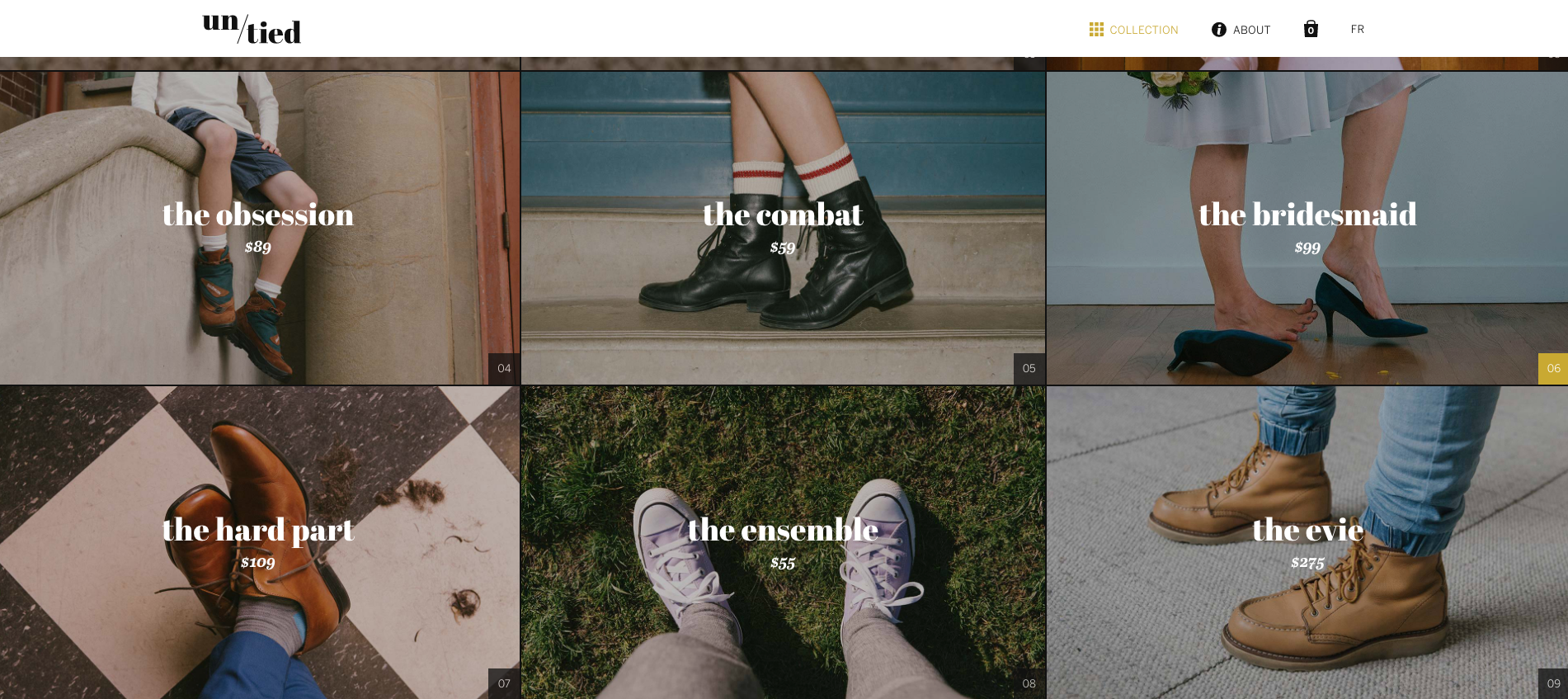At first glance, the website Un/tied Shoes appears to be an online shoe store. But look closer and you’ll see the site, launched by the National Film Board, is really a creative platform through which writer and activist Evie Ruddy, who is genderqueer, provides first-person accounts of the times they’ve struggled to find affirming footwear that actually fits. Un/tied Shoes tells the story of how gendered conventions have challenged Ruddy throughout their life, and pokes fun at the fashion industry’s insistence on sticking with the gender binary.
Xtra’s Ziya Jones spoke with Ruddy about the project.
We’ve seen discussions around clothing and gender identity before. Why present this story as an online store this time?
“We were looking for something that would bring in people who identify as cisgender. The page is set up like an online shoe store and is going to be promoted as such through advertising on social media. It’s presented the same way online stores typically are, with a male and female category. To get into the site you have to choose one. Once users get into the ‘store’ and start shopping, though, they realize the items aren’t actually for sale. They’re telling a story about gender and the gender binary and the challenges that someone like me, who is genderqueer, faces while shopping for shoes.”
Why focus on shoes and not, say, clothing?
“I’d originally pitched this project a few years ago when I was still newly identifying as non-binary or transmasculine. I was starting to realize how important shoes are to communicating the message about my identity I want people to receive. I started to think of the difficulty I’d had throughout my life finding footwear that I feel comfortable in. It’s mostly because I’m very small — I wear a size 6 in women’s shoes. It’s very difficult to find shoes I like in my size. You can get your clothes altered. With shoes, you can’t, unless you get them custom made.
“Still, clothing is definitely part of it. Whenever I go to the mall, I almost always leave feeling defeated. I want to wear menswear. I don’t have the language to describe it any other way. It’s not actually ‘for men.’ But I want to wear collared shirts and men’s dress shoes.
“I feel like I don’t fit into this world, into the gender binary. I don’t dress the way I’m supposed to. And I also think it takes a lot of courage to go into the men’s side of a store when you’re not a cis man.”
How can what we wear affect how validated we feel?
“Clothing is a tool for reflecting how we feel on the inside. Finding a pair of shoes that I want to wear and wearing them is affirming. In Un/tied, I tell the story of when I was in Grade 6 and I really wanted a specific pair of boys’ shoes. My parents drove all around Saskatoon looking for my size, but no one carried it because my feet were too small. I ended up buying them anyway, two sizes too big — I wanted them that badly. When I tried them on I walked differently, felt differently about myself, saw myself in the mirror differently. And it felt good. It was like, ‘This is how I wanted to look and what I want to communicate to people about who I am.’ Because I didn’t feel like a girl. I didn’t feel like a boy either. I just didn’t have the language to express that at the time.”
What about now, as an adult who has this language?
“When I wear what I like I feel really good in my body. It took me a while to get here because for several years I was making it work with ‘women’s clothing.’ Even the simplest task, like buying a T-shirt, was difficult. It always had a V-neck or wasn’t cut properly. So it didn’t feel right. It didn’t give me the image I wanted to convey.”
God, I feel that. I went looking for a suit last month and it was just a nightmare. For reference, I’m also small. I look like I’m 12.
“Right? I’ll walk into a shoe store and go into the men’s side and there’s all these beautiful shoes that I’m, like, pining after that I would love to wear and I can’t. And there’s this pang of disappointment and injustice.”
Was there a point where you were like, “fuck it, I’m done making it work with women’s clothing. I’m just going to wear what I want”?
“Yes and no. Because even when I said, ‘fuck it, I’m going to wear what I want,’ I couldn’t. I still had trouble finding things in my size. That said, my attitude did shift a few years ago, when awareness was growing around the terms ‘genderqueer’ and ‘non-binary.’ When I heard those terms I was like, ‘Yeah that’s what I am.’ When I finally had the language to describe how I’d been feeling, I thought that was worth exploring.
“A friend got married not long after, and I wore masculine formal wear the first time ever. I bought a vest and suspenders and I had my hair cut in a traditional men’s style. There was no going back. I wasn’t going to make it work in women’s clothing anymore.”
What’s the most affirming accessory or piece of clothing you’ve found so far? Put me in a binder and a jean jacket and I’m just, *chef’s kiss.*
“I absolutely love my dropped-crotch pants. I hold myself differently in them and I feel confident. I walk differently. The clothing we wear affects the way we move. If I were to wear a skirt, for example, I wouldn’t walk in the same way. In my pants, my strides are longer and I walk more confidently.”
What do you wish cis people understood about access to validating clothing?
“I hope that people who come to the site and spend some time with it understand that the experiences most cis people have might be taking the ease of shopping for granted — especially if they’re thin. Not everyone has access to the clothing and the shoes that help reflect their identity. I want them to reflect on the importance of the clothing and shoes they buy and how those things affirm their identity, how difficult it would be if that were taken away from them.
“The project is also directed at the fashion industry, though. I hope anyone working in that sector considers why they market things the way they do. Why is there this need to divide stores into men’s and women’s clothing? And can they expand their understanding of gender to include more than two genders?”


 Why you can trust Xtra
Why you can trust Xtra


